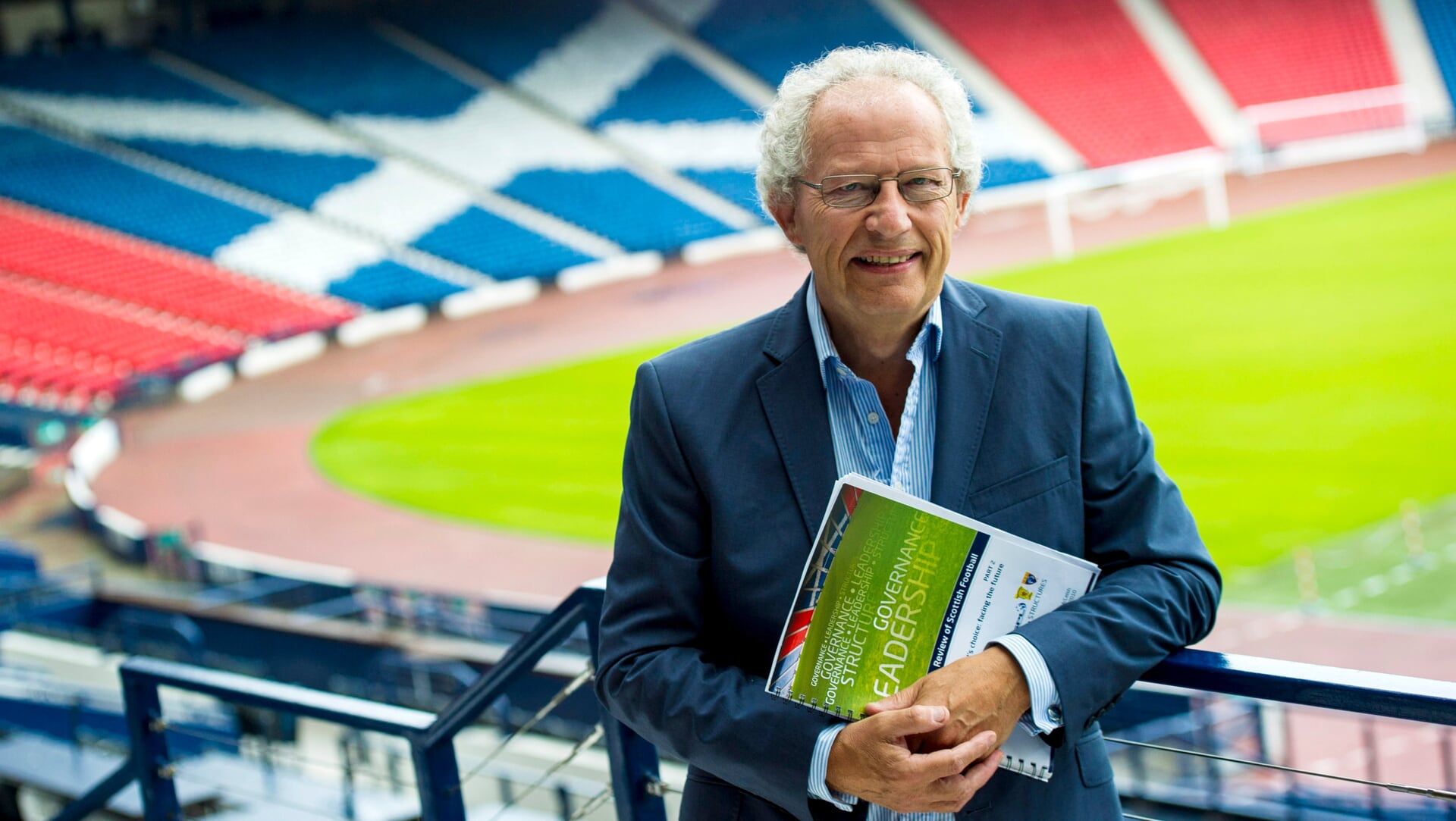With the Premiership split looming and the football season nearing that time when the big prizes are handed out, managers and players are keen to stress that they are just looking at things one game at a time.
But details have emerged of a potential shake-up for the SPFL that could mean the end for the established league structure and has everyone contemplating the future shape of the professional set-up.
League reconstruction is back on the agenda and that could mean major changes for the experience of fans, and the prospect of clubs up and down the country.
We’ve taken a look at what’s known about the possibility for change, and how things could unfold.
Why is league reconstruction back in the news?
The Herald broke the news on Tuesday that an SPFL sub-committee was to study league reconstruction and look at a variety of different models for the professional leagues.
A small number of clubs had asked for the issue to be investigated by the SPFL’s Competitions Working Group, and that coincided with concern from the league body about the current fixture schedule.
A whole range of proposals will be up for discussion, including expanding the Premiership, but the mood music suggests that reducing the number of teams in the top division would be the ‘best’ option.
It’s at a very early stage, but talks will take place this month, which is likely to result in proposals being put up for discussion with all SPFL member clubs.
Haven’t we been here before?
 SNS Group
SNS GroupSince the move to a 12-team top flight in the 2000/01 season, league reconstruction has regularly been discussed, with some changes brought in over the years and plenty of arguments every time the issue is discussed.
As far back as 2010, following his wide-ranging review of Scottish football, former First Minister Henry McLeish backed plans for a return to a ten-team top flight, and the SPFL hierarchy felt that was a model that would deliver the best financial returns for teams.
In comments that would strike a chord today, McLeish said: “A Premier League of 14 teams which would be more in tune with what the fans and spectators have been asking for but which would run the risk of some serious financial difficulties and a reduction in the current financial distribution going to the clubs.
“The quality of the SPL would also be a major consideration.”
Proposals to change the league at that time were scuppered by four sides in the Premier League, making their opposition known.
There was, of course, reconstruction when the SPL and SFL merged in 2013, and the current 12-10-10-10 structure for the four divisions was introduced, though only after St Mirren and Ross County had voted down an initial plan for a 12-12-18 format.
Over the years, play-offs have been introduced, as well as access to the SPFL from further down in the football ‘pyramid’, but the size of the top division has remained unchanged.
In 2020, there was another major proposal put to clubs, this time triggered by the premature end to the season after Covid hit.
Hearts, Partick Thistle and Stranraer faced relegation and a blueprint was drawn up to expand the top flight as part of a new 14-10-10-10 format that would see the top eight teams in the country play a 40-game season and a hybrid ‘Premiership 2’ created after the split. An indicative vote found only 16 of 42 senior clubs in support.
Two years ago, it emerged that plans for a new ten-team ‘Scottish Conference’ league below League 2, that would include Premiership B teams’ was under consideration but the proposal didn’t come to fruition. Related plans for a new ‘League 3’ were also discussed but weren’t considered to have the appeal to be carried in a vote.
Since then, there haven’t been any formal moves but talk about the best way forward for clubs and for fans has continued. Livingston manager David Martindale was vocal last year about his belief that an 18-team top flight would improve the game, and some supporters have often made their desire for bigger leagues clear.
What’s wrong with the status quo?
As far as the size of the Premiership goes, it’s fair to say that there are pros and cons to the current set-up.
Critics, including many supporters, say that there’s too much repetition in a format that sees teams face each other at least three and often four times a season. The quirk of the split means that sometimes there’s an uneven balance in home and away games against a certain side and that it’s absurd that the team in seventh can end up with more points than the team in sixth.
There are also those who say that the design means there’s a lack of safety and that means clubs are reluctant to play young players and therefore stifles talent.
Fans of the league split say the design is what makes the Premiership work. In a league where the title race is traditionally run between just two sides, breaking into a top six and bottom six focuses the competition for European places in the top half and intensifies the relegation battle for those who don’t make the cut. And while there’s no prize for making the top six, it’s become a recognisable goal for teams to set their sights on.
This year’s competition is a good example of that, with five sides still not certain which half of the table they’ll end up in with only two games before the split.
Number of games is also an issue, isn’t it?
Part of the reason the split was introduced was to give the best of both worlds – an expanded top flight, but without the 44-game season, a 12-team set-up would usually bring.
The split brings the length of the season down to 38 games but for schedulers, that’s now beginning to look like too much.
The expansion of UEFA’s club competitions to a larger league phase now means eight matchdays for Champions League and Europa League sides. Accommodating those extra games has already meant the Premiership is saying goodbye to the winter break this season, but there’s still a squeeze on.
From next season, clubs in European play-offs will be able to postpone their Gameweek 3 fixture to help with preparation, but that means another match to be fitted in later on in an already packed schedule.
International breaks, European games, rearranged fixtures and two cup competitions leave very little wriggle room in the calendar and if there’s a cold snap or sustained wet weather, postponements could cause havoc and leave a pile-up of games at the business end of the season.
A 38-game season is starting to look like a bit much to some.
Why is a return to a ten-team league making headlines?
 SNS Group
SNS GroupThe SPFL working group will look at a range of different formats and structure, with a 10, 14 or even 16-team top flight up for discussion.
Each will have its pros and cons, and there can be variety in how a larger league could work in terms of a having a split or not. Previous proposals have seen a 14-team Premiership with a 6-8 split, for example, keeping the number of games down for the teams at the top who might be expected to have a run in European competition.
Doing away with the split altogether would also bring the number of matches down, with a 16-team top flight that plays each other twice being a 30-game season. Or David Martindale’s preferred 18-team league having a 34-game season, down four matches on the current demand on teams and leaving space for a winter break and a cushion for postponements.
Those ideas ignore the elephant in the room though. Broadcasters’ wishes hold huge sway in any discussions because of the money that television deals bring in for clubs, and the desire for big-ticket fixtures is obvious.
The current TV deal delivers four Old Firm fixtures a season and this season there are at least three Edinburgh derbies and Dundee derbies.
A return to a ten-team Premiership brings the match count down to 36 games each if everyone plays each other four times, and it guarantees the number of derbies for television. The arguments about repetition and the difficulty for teams outside the top ten to grow would remain valid but the fixture issue and the broadcast demands would be satisfied. That makes it the most likely plan to advance, on paper.
What are the next steps?
It’s still very early in the process and all of the above and more will be discussed by the working group, and plans would be drawn up, campaigns simulated and finances weighed up.
If a single proposal is seen to be a credible alternative to the status quo, it would then be presented to the full 42 SPFL member clubs for consideration.
At that point there would be more discussion, as well as talks with the Scottish FA, whose Pyramid Working Group are aware of the move and would have an interest in how any major restructure would affect the access to the professional leagues and progress for ambitious clubs.
Things would then move on to voting, with an informal canvassing of support likely before a formal vote takes place.
For reconstruction to take place, it would need votes from from 11 out of 12 top-flight clubs, 75% of the combined Premiership and Championship sides, and 75% of all 42 SPFL clubs overall.
Would it get the votes?
Judging by previous proposals, there would be plenty of lobbying both in private and public before any vote takes place.
There’s also likely to be counter-proposals and tweaks suggested when any detailed plan is put to clubs. For example, there’s been a sustained push for Premiership B teams to be given a permanent home in a new-look SPFL and it would be no surprise if that issue was folded into any reconstruction talk.
The obvious barrier to any return to a smaller top division would be the fact that turkeys don’t vote for Christmas.
Cutting the Premiership from 12 teams to ten would mean a season where three sides are relegated, or just two if the decision was taken to block promotion from the second tier for a year and render a Championship season relatively meaningless.
With 11 out of 12 Premiership sides needing to vote in favour, and at least half or the league in very real danger of being one of the three sides facing the drop, it’s hard to see a scenario where they vote in numbers to back the plan.
St Johnstone owner Adam Webb has already spoken out, saying league expansion is the way to go, suggesting the Perth club would oppose any other options.
Teams who have an eye on a European run may be in support though, and some have struggled to balance the demands of both continental and domestic competition in recent years.
The three fan-owned Premiership sides: Hearts, Motherwell and St Mirren, would be likely to seek supporter opinion before deciding on their response.
The Championship is cut-throat and sides battle season after season to try and reach the top level with the odds, and the structure, stacked against them. Backing a plan that cuts their promotion chances significantly doesn’t seem sensible for those who would instead see themselves as natural occupants of an expanded Premiership.
However, there would be other factors at play, and a financial argument might be persuasive if the figures were substantial.
Previous proposals have been hand-in-hand with a redistribution of finances and it can be the case that ambition to climb the table and earn further riches is weighed up against a guaranteed increase in a club’s share of the overall pot.
Most of the discussions will take place behind closed doors, of course, but the further a proposal for change advances, the more certain fans can be that it has growing support from clubs.
If it happens, when could change take place?
Given the time it would take for proposals to be drawn up and any discussion and voting to take place, it would look like the season after next would be the earliest for any new-look SPFL.
Follow STV News on WhatsApp
Scan the QR code on your mobile device for all the latest news from around the country


 SNS Group
SNS Group

























